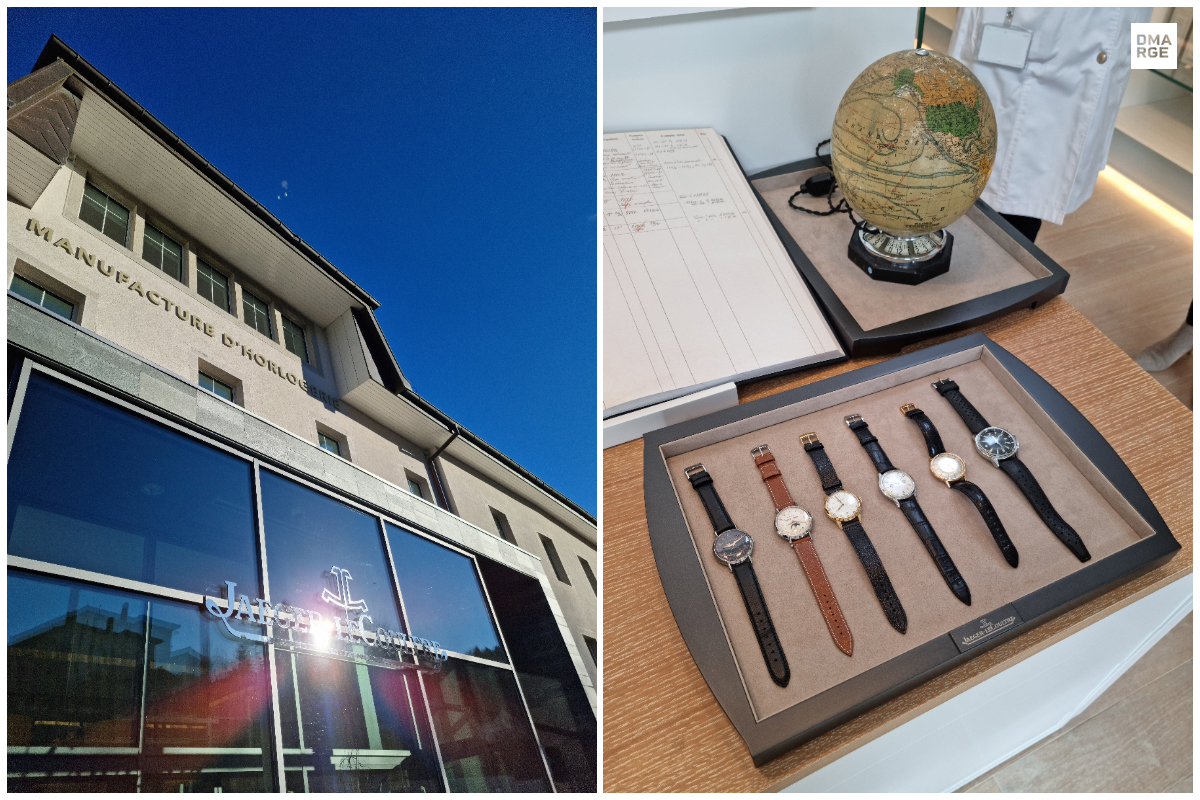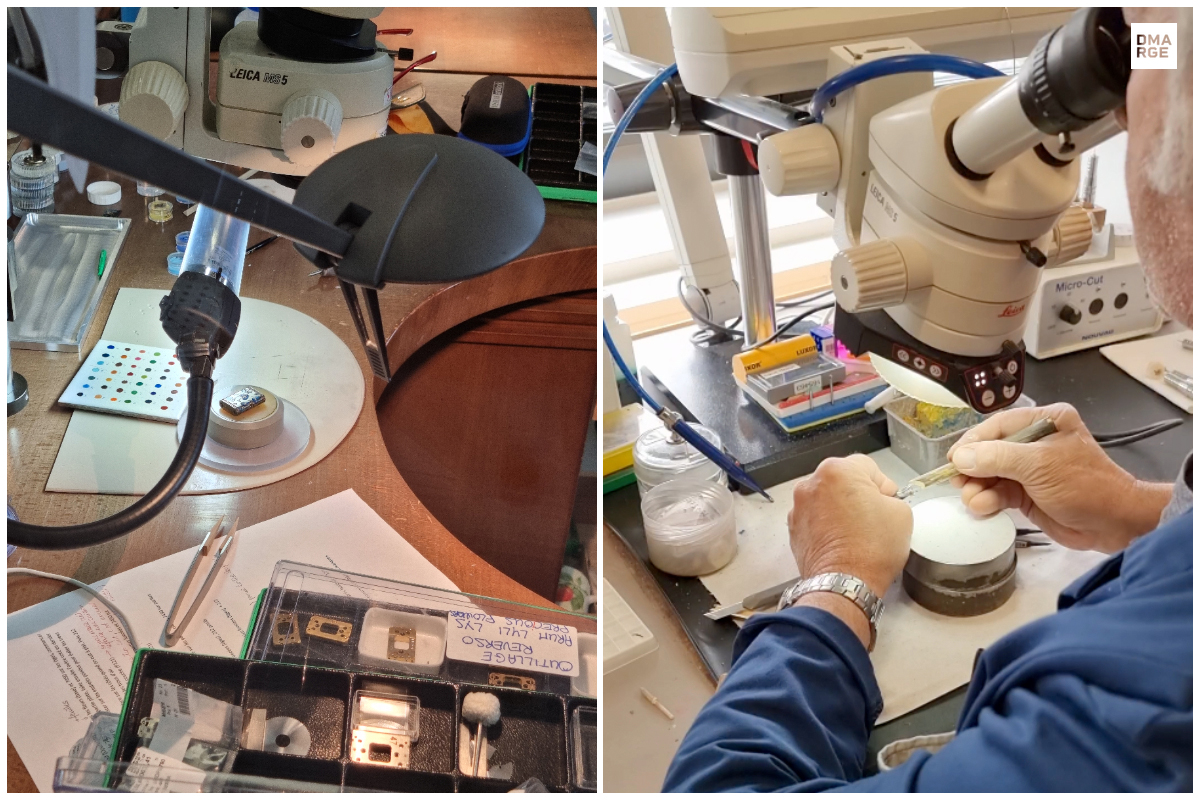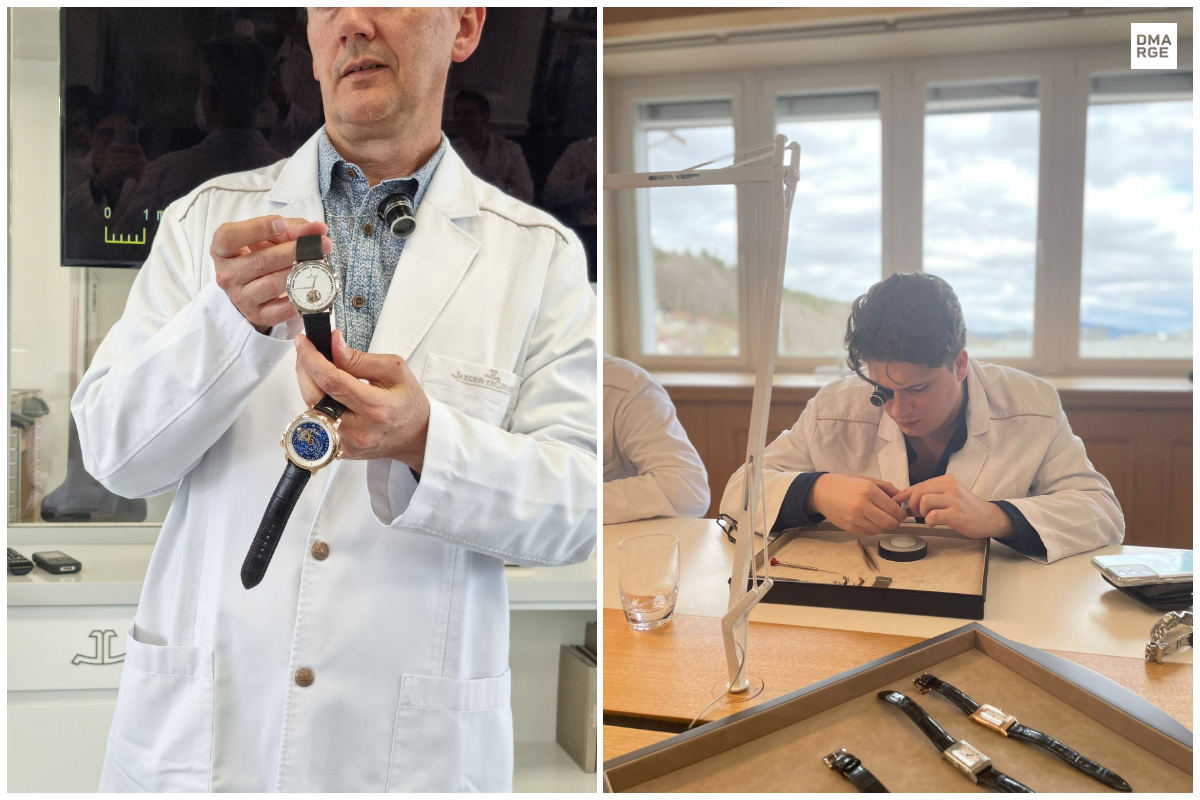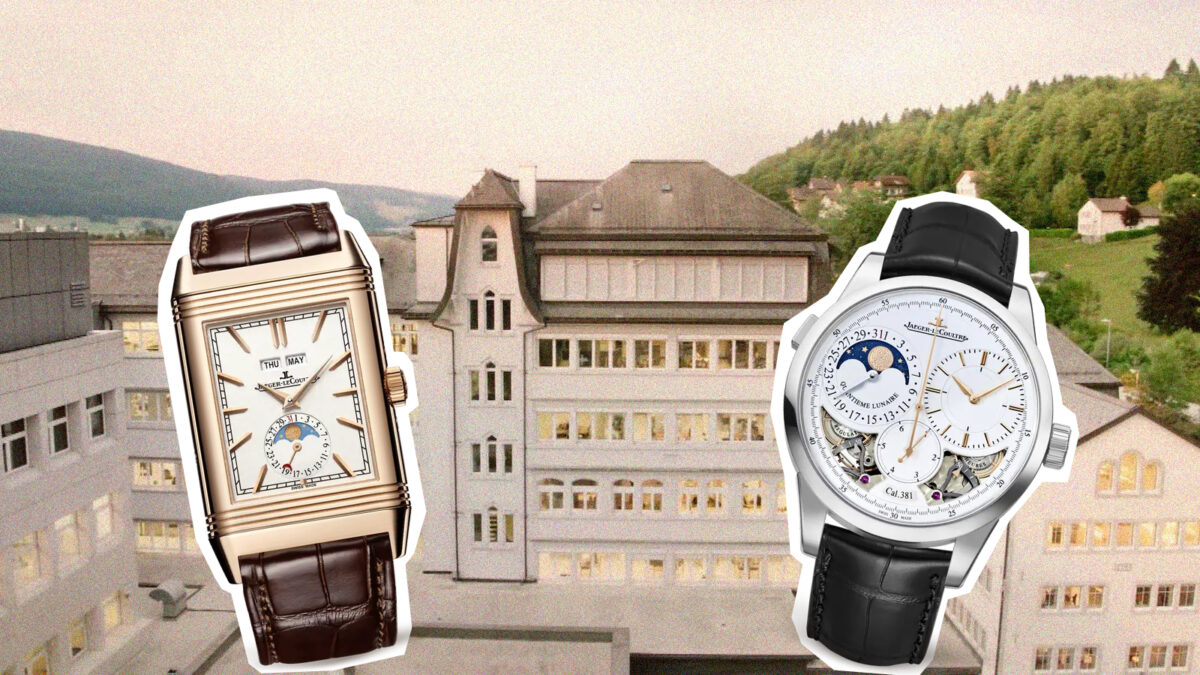To the uninitiated, most watches seem ridiculously expensive. Why pay thousands of dollars for a timepiece when your mobile phone’s just as good at telling the time? But of course, a mechanical watch isn’t just a tool for counting the hours – it’s a piece of art. And if you go and see how they’re made, you’ll really appreciate why they’re so pricey.
Let me set the scene. The sun’s just come out in Geneva after a few days of snow and rain. I’m in the Swiss city for the 2022 edition of Watches & Wonders: the watch industry’s biggest and most important trade show. It was an intense week filled with horological marvels – a paradise for a watch nerd like me.
The show has just wrapped up. I’m waiting for a shuttle bus, sunnies on, and I’m a bit overwhelmed. After such an amazing week, I thought I’d seen just about everything you could when it comes to watches at Watches & Wonders, and already had a pretty good grasp on the economics of modern watchmaking… Turns out I hadn’t seen anything yet.
Why? Because that shuttle bus was just about to send me off to the Vallée de Joux – the cradle of Swiss watchmaking, and therefore the spiritual home of all watchmaking – to visit one of the most impressive watch manufactures on the planet: Jaeger-LeCoultre.
As we piled onto the bus, the anticipation among us journalists was palpable. Comparing notes, there’s definitely a hierarchy about which watch manufactures are the most worth visiting, and according to aficionados, JLC’s easily ranks among the very top. Naturally, I was quite excited.

Descending into the Vallée de Joux was already a rather special experience. Nestled in the Jura Mountains, the Vallée de Joux is a beautiful place. Switzerland is a stunning country but the Vallée is particularly stunning. Raw, wild and isolated, it’s surprising that it’s here that the world’s best watches are made – but you can also understand how such beautiful pieces of mechanical art come from such a beautiful place.
It’s this isolation that informs why the Vallée such a watchmaking capital. Traditionally, its high altitude meant the Vallée was closed off during the long, harsh Swiss winter, and the local farmers couldn’t farm. They could mine, but being resource-poor, there wasn’t much ore to go around. So instead, they made watches with what little they could produce.
Today, it’s home to some of the world’s most famous brands’ factories: other than JLC, you’ve got Audemars Piguet, Blancpain, Breguet, Patek Philippe and Vacheron Constantin just to name a few. Unlike other parts of Switzerland famous for watchmaking, such as Neuchâtel, the Vallée de Joux is almost exclusively focused on complications and high-end watchmaking.
Anyway, enough waffling. We arrive in Le Sentier, a small village of only 3,000, at the gates of the Jaeger-LeCoultre manufacture. It’s an interesting complex made out of a number of very old buildings connected by modern annexes and additions, all backdropped by the untainted natural scenery of the Vallée de Joux.
RELATED: Jaeger-LeCoultre Reaches Astronomical New Heights At Watches & Wonders 2022
Founded by Antoine LeCoultre in 1833, Jaeger-LeCoultre is a rather unique firm. It’s often called “the watchmaker’s watchmaker” in reference not only to its popularity among enthusiasts but also its long history of providing movements to many top brands. It’s also one of only a few true manufactures in the business: that is, everything’s totally made in-house. That’s why it’s so worth visiting.

Inside, we not only got to tour virtually the entire manufacture, but we also got to take a look at their heritage restoration workshop and museum. JLC’s archive contains a real treasure trove of documents detailing the history of watchmaking in the Vallée de Joux, as well as many rare old references, including a still-working Polaris Memovox from the 60s. Mad.
RELATED: Jaeger-LeCoultre Dives Deep With New ‘Ultramarine’ Polaris Collection
The level of access we were granted was truly amazing. Darting between watchmakers and heavy machinery, we were right in the thick of it. The watchmakers were also exceptionally generous with their time, happy to chat with us (in French, bien sûr) and show off their craft.
What’s really striking is how ancient techniques coexist with modern technology in the pursuit of high watchmaking. On some floors of the manufacture, you’ve got super-modern multi-axis CNC machines controlled by computers. On others, you’ve got lathes from the 50s or earlier still in service. On top of that, so much is still done by hand: the gem-setting, enamelling, engraving…
For me, the most special moment is when a senior watchmaker showed us how he does anglage – the super-fine polishing on high-end components. Every morning, he goes out into the valley to harvest gentian wood. He then whittles down pieces of the wood into fine points, which he uses as tools for one of the final polishing stages.

This is proper artisanal stuff – the kind of thing watchmakers have been doing for generations. The attention to detail; the love lavished on these incredibly intricate pieces of art, is truly outstanding. Then, consider that this attention to detail is lavished upon hundreds if not thousands of individual components, some of which will never be seen by human eyes again. It’s mental.
If the realisation that luxury Swiss watchmaking is something special hadn’t hit home by this point, it certainly did during our visit to the Atelier d’Antoine, JLC’s discovery workshop and education centre. Here, we had a go assembling the case of a Reverso, JLC’s most iconic watch.
RELATED: Jaeger-LeCoultre Celebrate 90 Years Of An Icon: The Remarkable Reverso
It was fun but it took us an embarrassingly long time to get it done. The parts are so fine and fiddly: from the tiny screws to the wafer-thin rubber gasket, you need a steady hand and a lot of patience to get the case together. And that’s just a case, a relatively simple component. Imagine putting together a watch movement, with its hundreds of parts, springs and gears that all have to mesh together perfectly…
That’s before you even consider how hard it is to manufacture these parts in the first place, or how many different parts JLC must produce. JLC has thousands of patents to their name and hundreds of different watch calibres in production. The mind boggles.

Most people who buy luxury watches probably don’t think very critically about what goes into their hefty price tags. They see them as just status symbols. But once you’ve visited a proper watch manufacture like Jaeger-LeCoultre’s, you really appreciate why these things cost as much as they do.
They’re expensive because there’s so many different disciplines; so many different components; so much time that goes into making these timepieces. They’re labours of love, not just pieces of wrist candy (although I defy you to tell me that a Reverso isn’t one of the prettiest damn things you can wear…)
Whether you’re a watch nerd like me, an art lover or simply looking for a truly unique travel experience, I highly recommend you book in a visit to the Jaeger-LeCoultre manufacture next time you’re in Switzerland. You’ll learn a lot, and you won’t regret it.
Be warned, though: it might make you want to buy a watch…
Read Next
